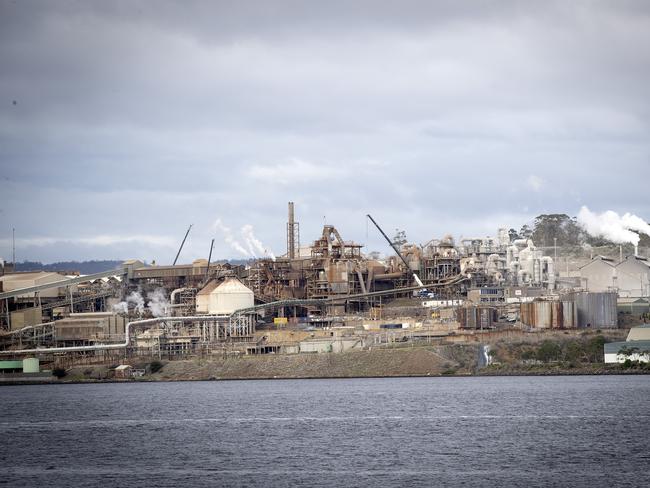Sulphur dioxide gas leak didn’t cause zinc smelter worker’s death, coroner finds
A coroner has handed down her findings into the death of loved husband and father who collapsed and died on the job at the Nyrstar zinc smelter.
Police & Courts
Don't miss out on the headlines from Police & Courts. Followed categories will be added to My News.
A SULPHUR dioxide gas leak was not responsible for the death of Nyrstar zinc smelter worker Michael Petterwood, a coroner has found.
On September 25 last year, the 59-year-old husband and father collapsed and died at the Lutana smelter, where he had worked for 32 years.
At the time, concerns were raised about the possibility the Risdon Vale man had been overcome by sulphur dioxide emissions – which can be fatal if inhaled.
An autopsy the following day found he died from a heart attack, most likely due to atherosclerotic coronary vascular disease and chronic lymphocytic leukaemia.
MORE:
WORKER DIES AT NYRSTAR ZINC FACTORY
WIFE’S TRIBUTE TO NYRSTAR SMELTER WORKER
But because blood testing could not confirm whether Mr Petterwood had been exposed to sulphur dioxide – and because levels of the gas in his work area were recorded as “excessively high” after his collapse – the case was subject to an investigation.

In February this year, evidence from the pathologist, Nyrstar, WorkSafe Tasmania and police was brought before Coroner Olivia McTaggart, who decided an inquest would not be held after deeming Mr Petterwood died of natural causes.
In her findings released today, Ms McTaggart said analysis of sulphur dioxide emissions before Mr Petterwood’s collapse were within “normal operating parameters”.
She said although a number of monitors recorded a peak in emissions after his collapse, those levels occurred because Mr Petterwood and other employees were unable – because of the emergency – to undertake a routine valve-opening task.

Ms McTaggart also noted that no alarms sounded to indicate a gas leak and that Mr Petterwood’s colleagues did not detect the “distinctive odour” that would have been present or become sick themselves.
She also said Mr Petterwood did not complain of any symptoms characteristic of gas exposure such as nausea, vomiting or a “burning” throat.
“There was no harmful level of sulphur dioxide in the area of his work at the relevant time and the subsequent emissions of this gas did not play any part in his cause of death. There were no other issues in his workplace that contributed to his death,” Ms McTaggart said.
“Nyrstar’s response to the medical emergency presented by Mr Petterwood’s collapse was prompt and appropriate, as was its involvement in this investigation.”


